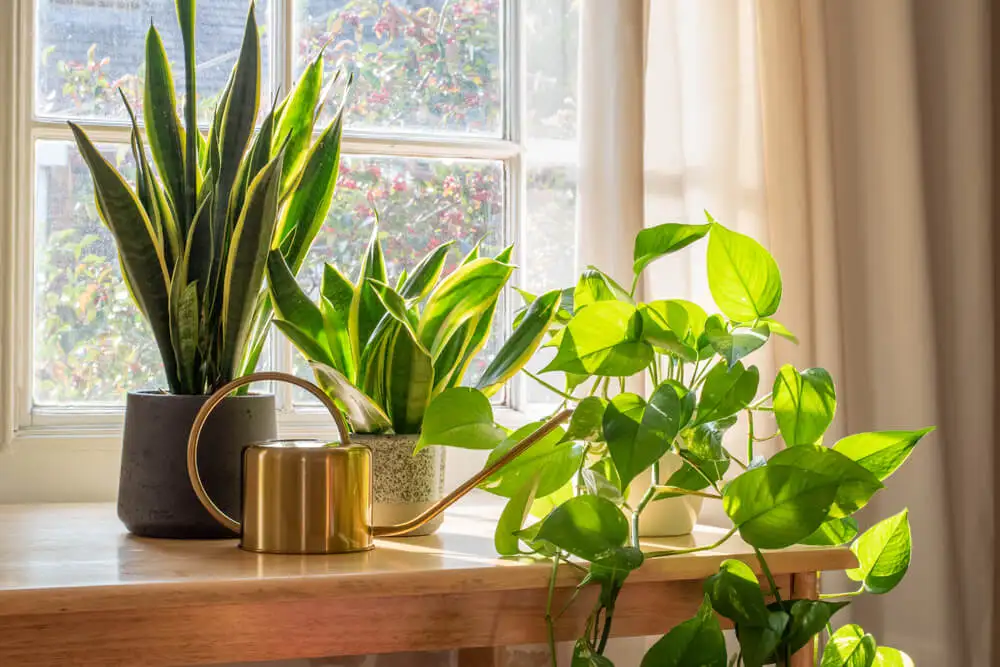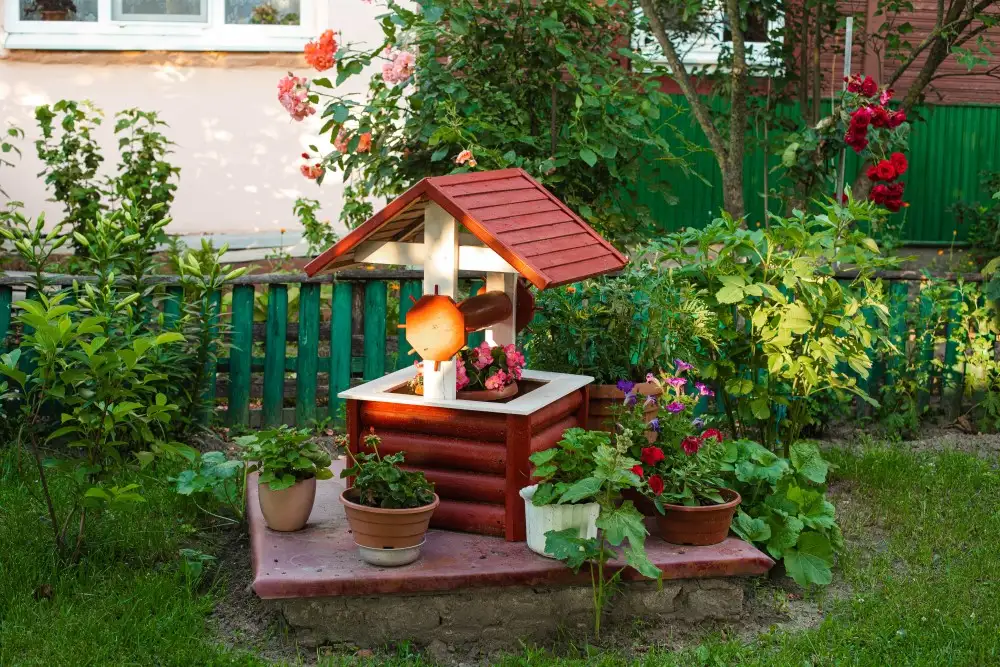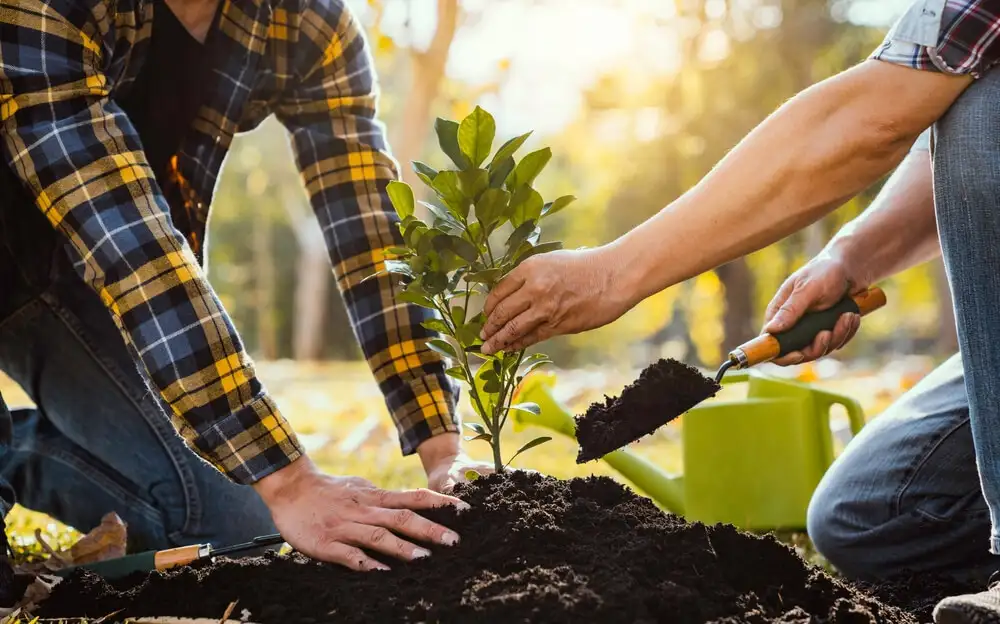Winter care for indoor plants usually requires more attention than summer care. In the winter, we usually have chilling temperatures and pleasant sunshine. Dryness is a common problem in plants like humans, we need to apply more moisturizer to our skin to keep it from drying.
Plants also require more moisture when it is cold outside. Here, we will discuss how to care for indoor plants in the winter, and the top 10 winter gardening tips for indoor plants, keep them alive, green & thriving by following the instructions.
Know when to water
One of the best ways to figure out how much water is required or how to keep any outdoor potted or indoor potted plants alive during winter is to stick the tip of your finger into the soil. If you feel moist under the soil surface, there is no need to sprinkle water on the plant. If you do not feel moist, you must sprinkle water. You must do these things every couple of days.
Move Them Into The Sunlight
Move your indoor plants a quarter-degree turn once a day, and always check the rotation of the indoor plant to ensure that there is no harm from excessive sunlight heat always ensures that your indoor plant gets enough sunlight, and air that is very beneficial for plant growth, and protects it from dust and wind.
Watch Out for Pests
Always follow winter gardening tips for indoor plants and how to protect them from bugs by using moist cotton balls and soft cloth spray organic oil, and always take care of pests like mites because they would damage the plant if they spread into your indoor plant. If you notice any leaf spots or white substance on the soil surface, isolate the plant and treat it right away.
On Cold Nights, Keep Plants Away From Windows
During the winter, the outside temperature drops at night, which is highly harmful to plant growth, flowering, and moisture, so move your plant away from the windowsill or cover it with newspaper, or we can cover it with draped plastic or fabric covers, wooden stakes, straw, or mulch. How we can help indoor plants survive in winter.
Group plants together
Grouping plants together makes them happier, raises the humidity around them, and increases their growth. We can also put a similar plant in a single pot, which makes plant maintenance easier. Most importantly, grouping your plants intensifies your space and adds value to your home.
Pay attention to humidity levels
The weather in the winter season is cool and dry, and the temperature falls very low, so plants usually experience a lack of moisture due to environmental changes. Buy a humidifier to keep plants humid in winter to maintain the humidity in the atmosphere.
Refresh soil a few times per winter
Always check the soil condition periodically during the winter by trimming, rustling up root balls, and fertilizer or we can cover indoor garden soil with mulch around the plant to increase soil aeration. Repotting your indoor plant should wait until spring because the plant requires all its strength in the winter, with these winter gardening tips for indoor plants you can refresh your plant soil.
Use a grow light on dark days
Winter days are very short, and the sun rarely shines, so make sure your plants get enough light. We can use LED grow lights, nearby lamps, and full spectrum bulbs to light up on leaves to keep them healthy. By applying this kind of stuff, we can take care of plants in winter.
Wipe down plants to keep dust away
Many indoor plants store dust during the winter, which is very harmful to plant growth. Stored dust blocks the sunlight’s warmth and spreads a lot of diseases in the plant. Occasionally gently clean the plant leaf by wiping it out with a wet cloth or sponge.
Must read: Top 10 Outdoor Garden Ideas for Small Spaces
Pause the Fertilizer
Most indoor plants hibernate during the winter and grow very slowly. They don’t produce stems or leaves as much as they do in other seasons, so they don’t require fertilizer. They start growing again in the spring when they receive enough sunlight.
Conclusion
All gardeners need to wear the Gardner glove and gardening tools just to take care of plants in winter to help to survive in winter if you are a beginner or experienced gardener, we hope that our winter gardening tips for indoor plants will help you have a successful winter garden
Provide the following conditions to help your indoor plants thrive during the winter months:
- Correct humidity levels
- Watering schedules have been adjusted to be seasonally appropriate.
- Draught-free location
- Adequate natural lighting, supplemented, if necessary, with grow lights
Frequently Asked Questions (FAQ):
-
How Do You Make Indoor Plants Survive Winter?
If your plant loses a lot of roots due to winter overgrowing. If you have a warm temperature environment, your indoor plants will probably thrive with little care during the winter. You’ll need to keep the moisture levels maintained and avoid overwatering, as well as light conditions proper for the variances of each type of plant.
-
Does Winter Affect Indoor Plants?
If your plant loses a lot of roots due to winter overgrowing. If you have a warm temperature environment, your indoor plants will probably thrive with little care during the winter. You’ll need to keep the moisture levels maintained and avoid overwatering, as well as light conditions proper for the variances of each type of plant.
-
How Do You Take Care Of Indoor Plants In The Winter?
Keeping indoor houseplants alive during the winter is a challenge. They need to be watered and fertilized, which is best done weekly or biweekly, according to your specific needs. Consider adding supplemental lighting as necessary, especially when bringing indoor plants outside to enjoy the sun during the day. As always, keep them away from drafts and out of direct sunlight.
-
What Can I Feed My House Plants In The Winter?
The winter season is a stressful time for most houseplants, as they do not have enough light or water. Feeding them the right food ensures that their leaves will be healthy and strong enough to cope with winter is not a good time to feed house plants, as temperatures are low, and so their roots may not be kept properly warm. The best time to feed them is before you plant them in spring.
-
What Is The Best Way To Water Indoor Plants?
Indoor plants are surprisingly less forgiving than outdoor flora because you can’t simply step out of the house and water them. Before you transfer your indoor plants to their new location, prepare the soil by giving it a good one-time watering. Remove the pot from your plant and place the leafy portion on top of the soil so that there is no visible root mass in the pot



